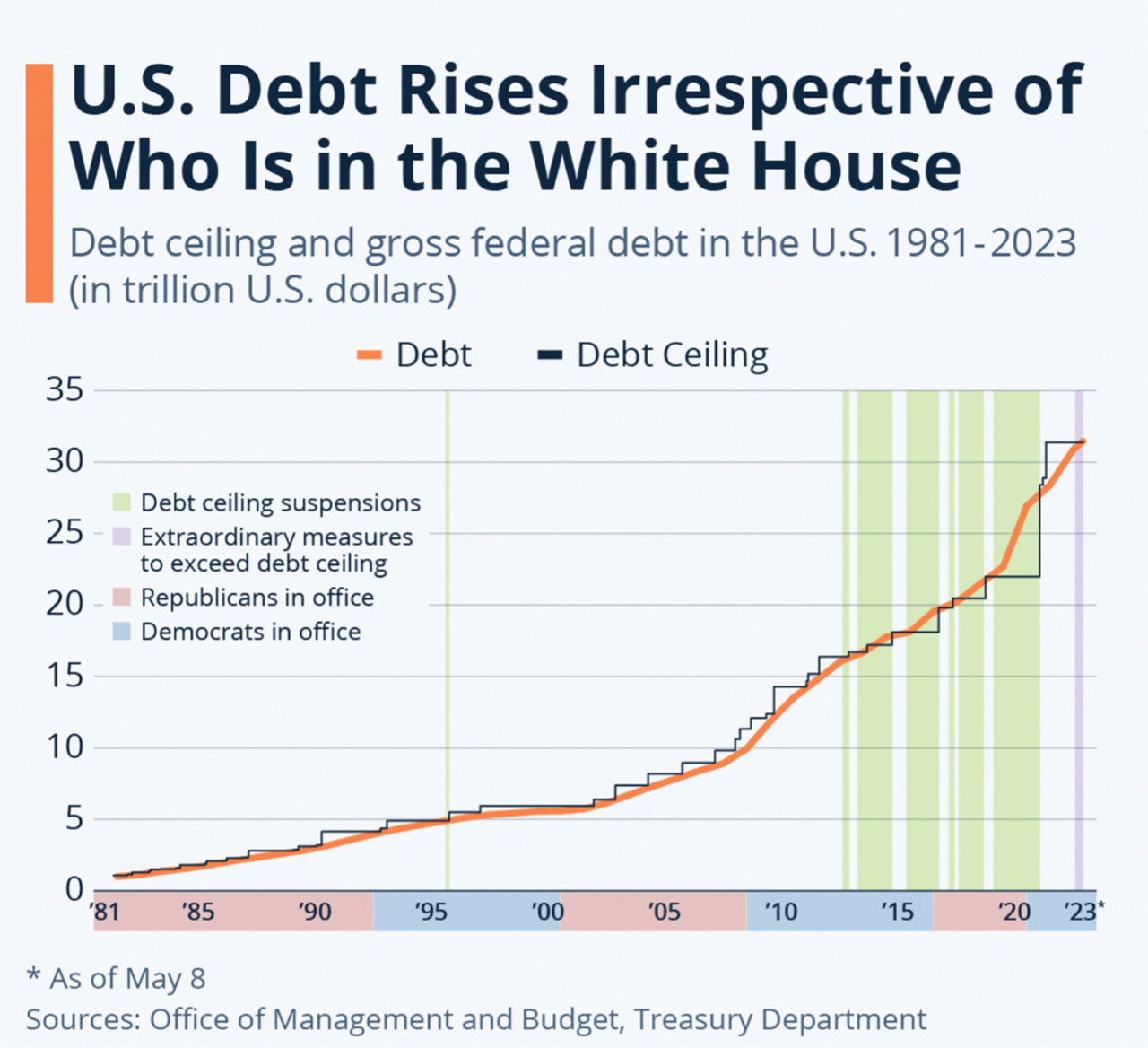In the United States the debt ceiling or debt limit is a legislative limit on the amount of national debt that can be incurred by the U.S. Treasury, thus limiting how much money the federal government may pay by borrowing more money, on the debt it already borrowed.[1] The debt ceiling was created under the Second Liberty Bond Act of 1917 and is also known as the debt limit or statutory debt limit.[2] The debt ceiling is an aggregate figure that applies to gross debt, which includes debt in the hands of the public and intra-government accounts. The debt ceiling is the maximum amount of money that the United States can borrow cumulatively by issuing bonds.[3]
If U.S. government national debt levels bump up against the ceiling, then the Treasury Department must resort to other extraordinary measures to pay government obligations and expenditures until the ceiling is raised again.[4] The debt ceiling has been raised or suspended numerous times over the years to avoid the worst-case scenario: a default by the U.S. government on its debt.[5]

This chart shows the debt ceiling in the United States from 1981 to 2023 (in trillion U.S. dollars)
The Federal Budget
The process of setting the debt ceiling is separate and distinct from the United States budget process, and raising the debt ceiling neither directly increases nor decreases the budget deficit, and vice versa.[6] The Government Accountability Office explains, “the debt limit does not control or limit the ability of the federal government to run deficits or incur obligations[7]. Rather, it is a limit on the ability to pay obligations already incurred.”[8]
The President formulates a federal budget every year, which Congress must pass, sometimes with amendments, in a concurrent resolution, which does not require the President’s signature and is not binding.[9] The budget details projected tax collections and expenditures and, therefore, specifies the estimated amount of borrowing the government would have to do in that fiscal year.[10] As of January 2023 Treasury Secretary Janet Yellen supported legislation to abolish the debt limit, which President Biden has ruled out.[11]
At Ironcrest Capital Management, we strive to make sure that everyone we work with has a strong understanding of their investments. Having a good approach and focus on the most important factors before investing is key. Our goal is to help you make the right decisions. If your current investing approach isn’t working, reach out to us so we can help.







